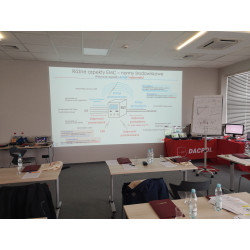-
вернутьсяX
-
Компоненты
-
-
Category
-
Полупроводниковые приборы
- Диоды
- Тиристоры
-
Электро-изолированные модули
- Электроизолированные модули | ВИШАЙ (ИК)
- Электроизолированные модули | INFINEON (EUPEC)
- Электроизолированные модули | Семикрон
- Электроизолированные модули | POWEREX
- Электроизолированные модули | IXYS
- Электроизолированные модули | ПОЗЕЙКО
- Электроизолированные модули | ABB
- Электроизолированные модули | TECHSEM
- Перейти в подкатегорию
- Выпрямительные мостики
-
Транзисторы
- Транзисторы | GeneSiC
- Модули SiC MOSFET | Mitsubishi
- Модули SiC MOSFET | STARPOWER
- Модули ABB SiC MOSFET
- Модули IGBT | МИЦУБИСИ
- Транзисторные модули | MITSUBISHI
- Модули MOSFET | МИЦУБИСИ
- Транзисторные модули | ABB
- Модули IGBT | POWEREX
- Модули IGBT | INFINEON (EUPEC)
- Полупроводниковые элементы из карбида кремния (SiC)
- Перейти в подкатегорию
- Драйвера
- Блоки мощности
- Перейти в подкатегорию
- Электрические преобразователи
-
Пассивные компоненты (конденсаторы, резисторы, предохранители, фильтры)
- Резисторы
-
Предохранители
- Миниатюрные предохранители для электронных плат серии ABC и AGC
- Быстрые трубчатые предохранители
- Медленные вставки с характеристиками GL/GG и AM
- Ультрабыстрые плавкие вставки
- Быстрые предохранители английский и американский стандарт
- Быстрые предохранители европейский стандарт
- Тяговые предохранители
- Высоковольтные предохранительные вставки
- Перейти в подкатегорию
-
Конденсаторы
- Конденсаторы для электромоторов
- Электролитические конденсаторы
- Конденсаторы типа snubbers
- Конденсаторы мощности
- Конденсаторы для цепей DC
- Конденсаторы для компенсации пассивной мощности
- Высоковольтные конденсаторы
- Конденсаторы большой мощности для индукционного нагрева
- Импульсные конденсаторы
- Конденсаторы звена постоянного тока
- Конденсаторы для цепей переменного/постоянного тока
- Перейти в подкатегорию
- Противопомеховые фильтры
- Ионисторы
-
Защита от перенапряжения
- Ограничители перенапряжения для приложений RF
- Ограничители перенапряжения для систем технического зрения
- Ограничители перенапряжения для линий электропередач
- Ограничители перенапряжения для светодиодов
- Ограничители перенапряжения для фотовольтаики
- Ограничители перенапряжения для систем взвешивания
- Ограничители перенапряжения для Fieldbus
- Перейти в подкатегорию
- Перейти в подкатегорию
-
Реле и контакторы
- Теория реле и контакторы
- Полупроводниковые реле AC 3-фазные
- Полупроводниковые реле DC
- Контроллеры, системы управления и аксессуары
- Системы плавного пуска и реверсивные контакторы
- Электро-механические реле
- Контакторы
- Оборотные переключатели
-
Полупроводниковые реле AC 1-фазные
- РЕЛЕ AC 1-ФАЗНЫЕ СЕРИИ 1 D2425 | D2450
- Однофазное реле AC серии CWA и CWD
- Однофазное реле AC серии CMRA и CMRD
- Однофазное реле AC серии PS
- Реле AC двойное и четверное серии D24 D, TD24 Q, H12D48 D
- Однофазные твердотельные реле серии gn
- Однофазные полупроводниковые реле переменного тока серии ckr
- Однофазные реле переменного тока ERDA И ERAA SERIES для DIN-рейки
- Однофазные реле переменного тока на ток 150А
- Двойные твердотельные реле, интегрированные с радиатором для DIN-рейки
- Перейти в подкатегорию
- Полупроводниковые реле AC 1-фазные для печати
- Интерфейсные реле
- Перейти в подкатегорию
- Индукционные компоненты
- Радиаторы, варисторы, термическая защита
- Вентиляторы
- Кондиционеры, оборудование для шкафов, охладители
-
Аккумуляторы, зарядные устройства, буферные источники питания и инверторы
- Аккумуляторы, зарядные устройства - теоретическое описание
- Модульные литий-ионные аккумуляторы, пользовательские батареи, Система управления батареями (BMS)
- Аккумуляторы
- Зарядные устройства и аксессуары
- Резервный источник питания ИБП и буферные источники питания
- Преобразователи и аксессуары для фотовольтаики
- Хранилище энергии
- Топливные элементы
- Литий-ионные аккумуляторы
- Перейти в подкатегорию
-
Автоматика
- Futaba Drone Parts
- Концевые выключатели, Микровыключатели
- Датчики Преобразователи
- Пирометры
- Счетчики, Реле времени, Панельные измерительные приборы
- Промышленные защитные устройства
- Световые и звуковые сигнальные установки
- Термокамеры, Тепловизоры
- LED-экраны
- Управляющая аппаратура
-
Регистраторы
- Регистраторы температуры с записью на ленту и с цифровым показателем - AL3000ym - AL3000
- Микропроцесорные регистраторы с экраном LCD серия KR2000
- Регистратор KR5000
- Измеритель с функцией регистрации влажности и температуры HN-CH
- Эксплуатационные материалы для регистраторов
- Компактный графический регистратор 71VR1
- Регистратор KR 3000
- Регистратор PC серии R1M
- Регистратор PC серии R2M
- Регистратор PC, USB, 12 изолированных входов – RZMS
- Регистратор PC, USB, 12 изолированных входов – RZUS
- Перейти в подкатегорию
- Перейти в подкатегорию
-
Провода, литцендрат, гофрированные рукава, гибкие соединения
- Провода
- Многожильные провода (Lica)
-
Кабели и провода для специальных применений
- Удлинительные и компенсационные провода
- Провода для термопар
- Присоединительные провода для датчиков PT
- Многожильные провода темп. от -60C до +1400C
- Провода среднего напряжения
- Провода зажигания
- Нагревательные провода
- Одножильные провода темп. от -60C до +450C
- Железнодородные провода
- Нагревательные провода в Ex
- Перейти в подкатегорию
- Оболочки
-
Плетеные кабели
- Плоские плетеные кабели
- Круглые плетеные кабели
- Очень гибкие плетеные кабели - плоские
- Очень гибкие плетеные кабели - круглые
- Медные цилиндрические плетеные кабели
- Медные цилиндрические плетеные кабели и кожуха
- Гибкие заземляющие ленты
- Цилиндрические плетеные провода из луженой и нержавеющей стали
- Медные изолированные плетеные провода PCV - температура до 85 градусов C
- Плоские алюминиевые плетеные провода
- Соединительный набор - плетеные провода и трубки
- Перейти в подкатегорию
- Аксессуары для тяги
- Кабельные наконечники
- Изолированные эластичные шины
- Многослойные гибкие шины
- Системы прокладки кабеля (PESZLE)
- Трубы
- Перейти в подкатегорию
- Просмотреть все категории
-
Полупроводниковые приборы
-
-
- Поставщики
-
Программы
- Energy bank
- Автоматика HVAC
- Горное дело, металлургия и литейное дело
- Двигатели и трансформаторы
- Измерение и регулирование температуры
- Измерение и регулирование температуры
- Индукционный нагрев
- Индустриальная автоматизация
- Источники питания (ИБП) и выпрямительные системы
- Компоненты для потенциально взрывоопасных сред (EX)
- Машины для сушки и обработки древесины
- Машины для термоформования пластмасс
- Оборудование для распределительных, контрольных и телекоммуникационных шкафов
- Печать
- Приводы переменного и постоянного тока (инверторы)
- Промышленная автоматика
- Промышленные защитные устройства
- Сварочные аппараты и сварочные аппараты
- Станки с ЧПУ
- Трамвай и ж / д тяга
-
Монтаж
-
-
Индукторы
-
-
Индукционные устройства
-
-
https://www.dacpol.eu/pl/naprawy-i-modernizacje
-
-
Услуга
-
- Контакт
- Zobacz wszystkie kategorie
Basics of Electromagnetic Compatibility: What It Is and Why It's Important? 1 of 8

Basics of Electromagnetic Compatibility: What It Is and Why It's Important? 1 of 8
Definition of Electromagnetic Compatibility (EMC)
Electromagnetic Compatibility (EMC) is a field of science and engineering that deals with preventing electromagnetic interference and ensuring that electronic devices and systems can operate alongside each other without mutual electromagnetic interference. In short, EMC concerns the ability of devices to function in environments with various sources of electromagnetic disturbances and minimize their impact on other devices.
In today's world, where electronics and communication systems are widely used in various fields such as industry, transportation, medicine, and telecommunications, issues related to EMC are of immense importance. Without proper electromagnetic compatibility, there is a risk of disturbances that can lead to system failures, data loss, and even pose a threat to user safety.
Within the field of Electromagnetic Compatibility, there are standards and regulations that define the minimum requirements for electromagnetic emissions and immunities. Organizations such as the International Electrotechnical Commission (IEC) and the Federal Communications Commission (FCC) develop standards that must be followed to meet EMC requirements. Compliance with these standards allows for effective cooperation between different electronic devices and minimizes the risk of electromagnetic interference.
It is important for manufacturers, designers, and engineers to have an awareness and understanding of Electromagnetic Compatibility and to implement appropriate techniques for designing, testing, and securing devices to ensure their reliability, durability, and compliance with regulations. Through proper EMC practices, the risk of electromagnetic interference can be minimized, thereby ensuring stable and safe operation of electronics in various environments.
Basic Principles of Electromagnetic Compatibility (EMC):
Electromagnetic Compatibility (EMC) is based on several key principles aimed at minimizing electromagnetic interference and ensuring the uninterrupted operation of electronic devices and systems. Here are the basic principles of EMC:

Principle of Emission
This principle concerns controlling the electromagnetic interference emissions generated by devices. Electronic devices can produce various types of electromagnetic signals that can interfere with the operation of other devices. The task of EMC is to limit these emissions by employing appropriate design techniques, shielding, filtering, and other measures to minimize the generation of electromagnetic disturbances.

Principle of Immunity
This principle pertains to the resistance of devices to electromagnetic disturbances originating from other sources. Electronic devices should be resilient to electromagnetic disturbances that may occur in the environment, such as radio signals, electromagnetic fields, or electrical surges. Through proper design, shielding, attenuation, and other techniques, devices can be more resistant to disturbances and maintain their operational integrity.

Principle of Separation
This principle concerns ensuring adequate separation between devices to avoid mutual electromagnetic interference. Devices should be designed and placed in such a way as to minimize interaction between them. Examples of actions consistent with this principle include proper cable and wire arrangement, use of screens and shields, and appropriate spatial planning of electronic systems.
Principle of Control
This principle involves monitoring and controlling the quality of signals and voltages in electronic devices. By monitoring and regulating electrical signals and eliminating unwanted interference, the quality and stability of device operation can be effectively controlled.
Understanding and applying these basic principles of EMC is crucial for designers, engineers, and manufacturers of electronic devices. By adhering to these principles, the risk of electromagnetic interference can be minimized, ensuring reliability, durability, and compliance with regulatory requirements for electronic devices.
The Essence and Significance of Electromagnetic Compatibility (EMC) in Today's Technological Environments:
In today's digital world, where electronic devices and communication systems are an integral part of our lives, the essence of Electromagnetic Compatibility (EMC) is becoming increasingly important. EMC is crucial for ensuring the uninterrupted operation of devices and systems in the presence of diverse sources of electromagnetic disturbances.
The main objective of EMC is to minimize electromagnetic interference, which can cause failures, malfunctions, data loss, or even risk to user safety. The introduction of electromagnetic disturbances can lead to communication interference, instability in device operation, transmission errors, and contribute to performance limitations and improper functioning of electronic control systems.
It is important to understand that in today's technological environments, there are many different sources of electromagnetic disturbances. This may include radio transmissions, telecommunication systems, power grids, electric motors, medical devices, and even everyday consumer electronics. The impact of these disturbances on the operation of other devices can be significant and lead to serious consequences.
Therefore, the significance of EMC cannot be underestimated. Compliance with EMC principles and standards is not only a legal requirement in certain industries but also a necessary condition for ensuring the reliability, durability, and safety of electronic devices. EMC practices allow for the identification, control, and minimization of both electromagnetic emission and immunity disturbances, as well as the appropriate design, testing, and protection of electronic systems.
In the present times, when technology and electronics are integral parts of our professional and personal lives, proper EMC management is incredibly important. It contributes to ensuring the reliability of our devices, minimizing the risk of failures, protecting the health and safety of users, and facilitating stable and efficient operation in diverse environments.
Связанный продукт
Связанные посты
 Now available – DC/DC converters from PREMIUM
Now available – DC/DC converters from PREMIUM
 New release in DACPOL lighting for lathes – Kira covers
New release in DACPOL lighting for lathes – Kira covers





Оставить комментарий